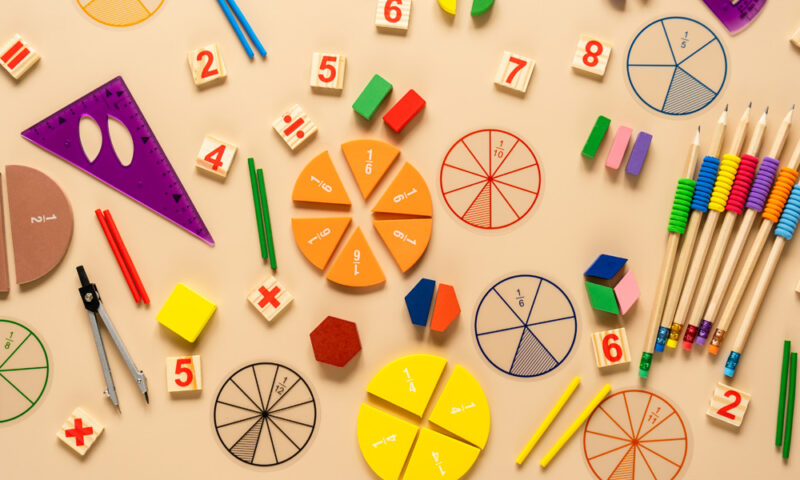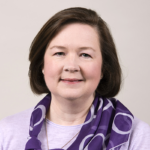Insights
Math IS Creative
If someone asked you if you were a creative person, your initial response would most likely be yes if you were a good actor, artist, dancer, musician, or writer, and no if you didn’t excel in these areas. If you thought about it a little longer, you might expand your definition to include a scientist like Marie Curie who discovered radium and polonium, an inventor like Thomas Edison who developed the incandescent light bulb, or perhaps even a chef whose culinary creations have earned acclaim. Most likely you didn’t identify mathematicians as creative people.
As someone who loves math and whose career is centered on math, I want to state emphatically that I identify myself as a highly creative person largely due to skills developed through math—problem-solving (as well as problem-posing), identifying patterns, connecting concepts, reasoning, analysis, etc. It’s due to mathematical creativity that I look at the world around me with wonder and imagine how it might be improved.
Not only is math a creative discipline in and of itself it is also essential to creativity in so many other disciplines. Michelangelo used the mathematical concept of the Golden Ratio to paint the ceiling of the Sistine Chapel. Shakespeare often wrote in iambic pentameter, relying on the five-beat rhythm to mimic everyday speech and engage his audience. Musicians use chord intervals as the building blocks of harmony. Programmers still use binary code to tell computers what to do.
And yet too many students (and teachers) think of math as simply rules and formulas, with no room for flexibility, imagination, or originality. So how can we teach math as a creative pursuit? How can we encourage students to see that math improves their ability to think outside the box and adapt to new circumstances, not only in math but also in life?
Ask open-ended questions. In the real world, math problems have multiple solution paths, and often have multiple correct answers. Posing open-ended questions allows students to think like mathematicians. They determine what the question is asking and how to figure out a solution. I am always surprised by the novel ways students approach a problem, the tools they use, and the strategies they apply. Open-ended questions engage your students in deep thinking, help them discover new strategies and approaches, and provide opportunities for students to connect concepts.
You don’t have to spend time looking for or creating open-ended questions. Rather start with a problem your students have just solved. For instance, if you’ve been working with 2nd graders on doubling—1 + 1, 2 + 2, 3 + 3, etc.—ask students to identify doubles they see in the classroom or in the real world. Talk about how doubles are a useful idea in contexts that matter to them, whether in pairs of shoes or riding the rides at an amusement park. Perhaps you teach 5th grade and you’ve just completed a lesson on volume. You can ask the students to plan drinks for a class party or to figure out how many bottles of water would be required to fill a small “kiddie” pool.
Allow students to pose questions. Children, particularly those in the primary grades, are naturally mathematically curious. Rather than having students simply solve a problem, build in time for them to make observations and ask questions. At first you will need to model these behaviors for students: “What do you notice about . . .? How else could you use . . .? What if you . . .? What else would you like to know? Can you describe a real-life situation where you would . . .?” With practice, students will make observations and ask questions on their own.
Ask students to write their own problems based on a problem the class has just solved. Encourage them to bring in their personal interests, when possible. They can use the reference problem to create a similar problem, an easier problem, and/or a more difficult problem. Having students create their own problems helps them build analogical thinking, provides them with an opportunity to explain their logic, and allows them take ownership of their learning. Additionally, you will discover more about your students’ understanding of key math concepts, how they think, and the strategies they use.
Build flexible thinking. When students discover a preferred strategy (or tool), one that helps them reach a solution, they often use it exclusively. But it’s important that students learn how to examine a problem from multiple perspectives using different approaches. You can ask students to use different tools—drawing, manipulatives, visualization, equations—to solve the same problem. Or ask them to think of all the possible answers to a given problem. For instance, how many different number combinations add up to a particular sum. Depending upon the grade level, students may use whole numbers, negative numbers, fractions, decimals, and may even posit that the number combinations are infinite.
Reward original thinking. As busy teachers, tasked with working through a demanding curriculum, we might inadvertently shut down the student whose thinking seems off track. But it’s important to recognize that students frequently come up with novel ways to solve a problem. Their approach may lead to an incorrect answer, but it might also produce a new solution path, one they haven’t been taught. An original solution is the very essence of creativity. And even if their idea doesn’t produce the desired result, it shows flexibility and innovative thinking. Often the person who thinks differently is the one who pushes our understanding in previously unimagined directions. That child in your class who wants to explore alternate paths may just be a future inventor, adventurer, artist, or mathematician.
Normalize mistakes. Mistakes are an essential part of doing math and often lead to greater learning. In the pursuit of a solution to a complex problem, professional mathematicians pursue and discard multiple ideas. As they discover what doesn’t work, they also learn more about what might work. This is true for students as well. Mistakes help students advance their thinking and work through possible solutions to a particular math problem. If students are afraid of making mistakes, they won’t take the risks that can lead to truly creative thinking and solutions. Establishing a classroom environment that recognizes mistakes as an essential part of the learning process gives students the confidence to pursue novel approaches and divergent thinking.
Promote productive struggle. It can be hard for teachers to see students struggle, but research shows that productive struggle leads to deeper math learning. When students grapple with difficult problems, they are more likely to explore multiple pathways, make connections between ideas, and display creative problem-solving. Students who persevere through challenge build confidence and develop a growth mindset—they know that with effort they can learn and excel at math even as the work becomes increasingly complex.
Encourage collaboration. We may think of a mathematician as a person who sits at a desk for hours a day working alone. But math is an inherently collaborative pursuit. It’s common for groups of mathematicians to work together on solving complex problems. And of course, mathematicians build upon the work of others. When students work together to solve a problem, they discover new strategies, are exposed to different thinking, and learn to justify their approach. As a result, they are more likely to make connections between ideas and to deepen their understanding of complex concepts. Learning from and teaching each other empowers students as mathematicians. Additionally, collaboration teaches kids that everyone brings something unique and important to the table.
Promoting creativity in the math classroom helps students become better, more confident problem solvers who can apply what they have learned to new situations, in math class and in life.




